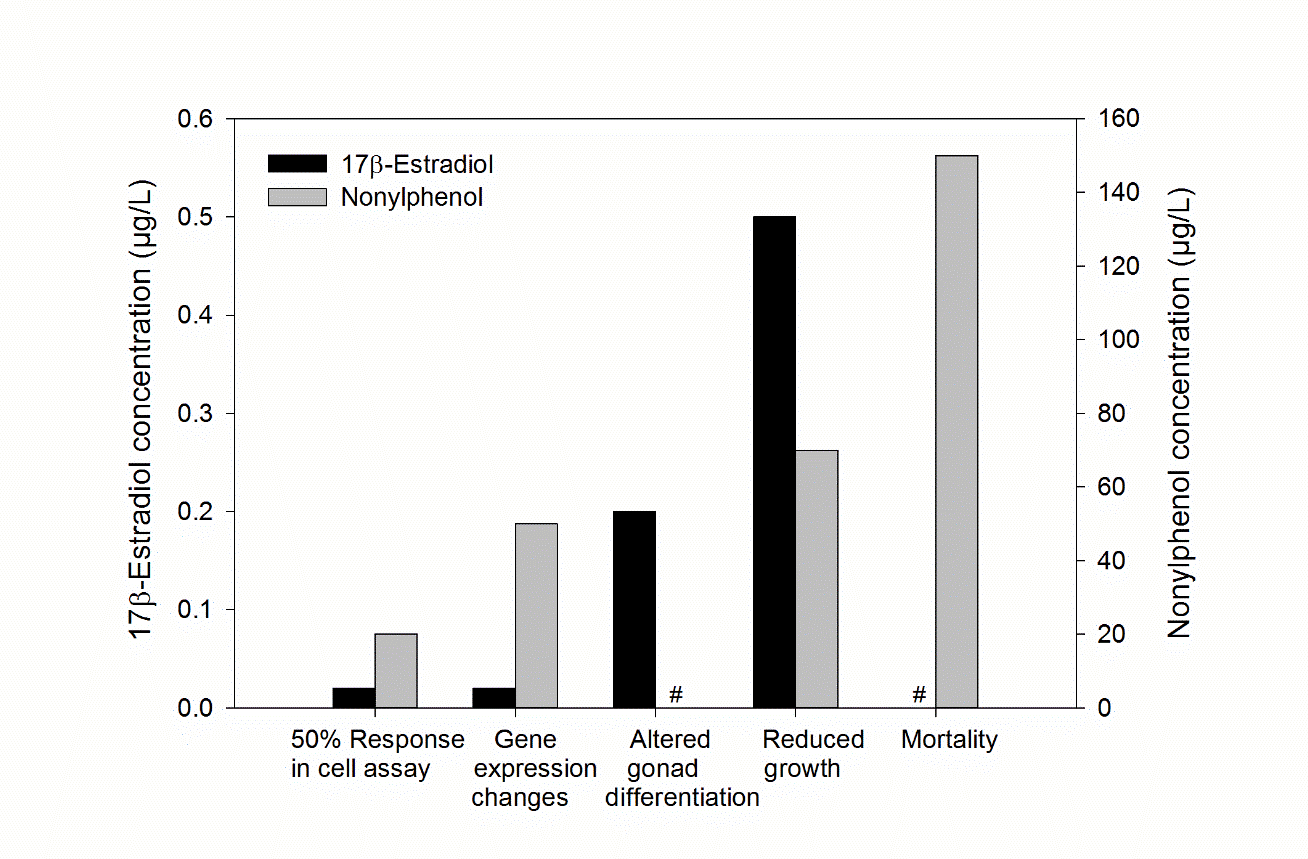Study: Cell bioassays could be effective at screening for potential harm in fish

SCCWRP and its partners at the University of Florida have demonstrated in a proof-of-concept study that biological assays built with engineered human cells have the potential to be effective at screening for potential biological harm in fish exposed to differing levels of estrogen-mimicking chemicals.
The finding, obtained in May, involved showing that there is a strong correlation between the way that engineered human cells respond to increasing levels of chemical contaminants, and the way that inland silverside fish experience increasingly severe biological effects when exposed to the same contamination.
The ongoing linkage study – the first of its kind in a coastal marine environment – provides compelling evidence that commercially available cell bioassays are a viable technology for screening receiving waters for potentially harmful levels of CECs. Cell bioassays are commonly used in pharmaceutical and food-industry applications to rapidly screen a wide variety of chemicals for potential toxicity.

SCCWRP and researchers around the world are interested in adapting cell bioassays into a viable CEC screening tool because traditional methods for monitoring the impacts of CECs on aquatic life – such as targeted chemical analysis and whole-organism toxicity testing – tend to be comparatively labor-intensive and costly. These methods also tend to be unable to detect all chemicals of concern, whereas a bioassay is designed to detect dozens of chemicals that share similar biochemical properties.
The next step in the study is to zero in on the precise chemical concentration at which the cell bioassays begin to detect an adverse biological response in fish. Knowing where this threshold lies is crucial to develop a long-term monitoring and management strategy.
Over the long term, researchers hope to develop new bioassays and/or adapt commercially available bioassays to screen for a wide variety of CECs. Already, SCCWRP and its partners have begun working to replicate the estrogenic linkage study with glucocorticoids, a class of steroidal anti-inflammatory drugs commonly used to treat eczema and asthma.
For more information, contact Dr. Alvina Mehinto.
More news related to: Bioanalytical Cell Screening Assays, Emerging Contaminants